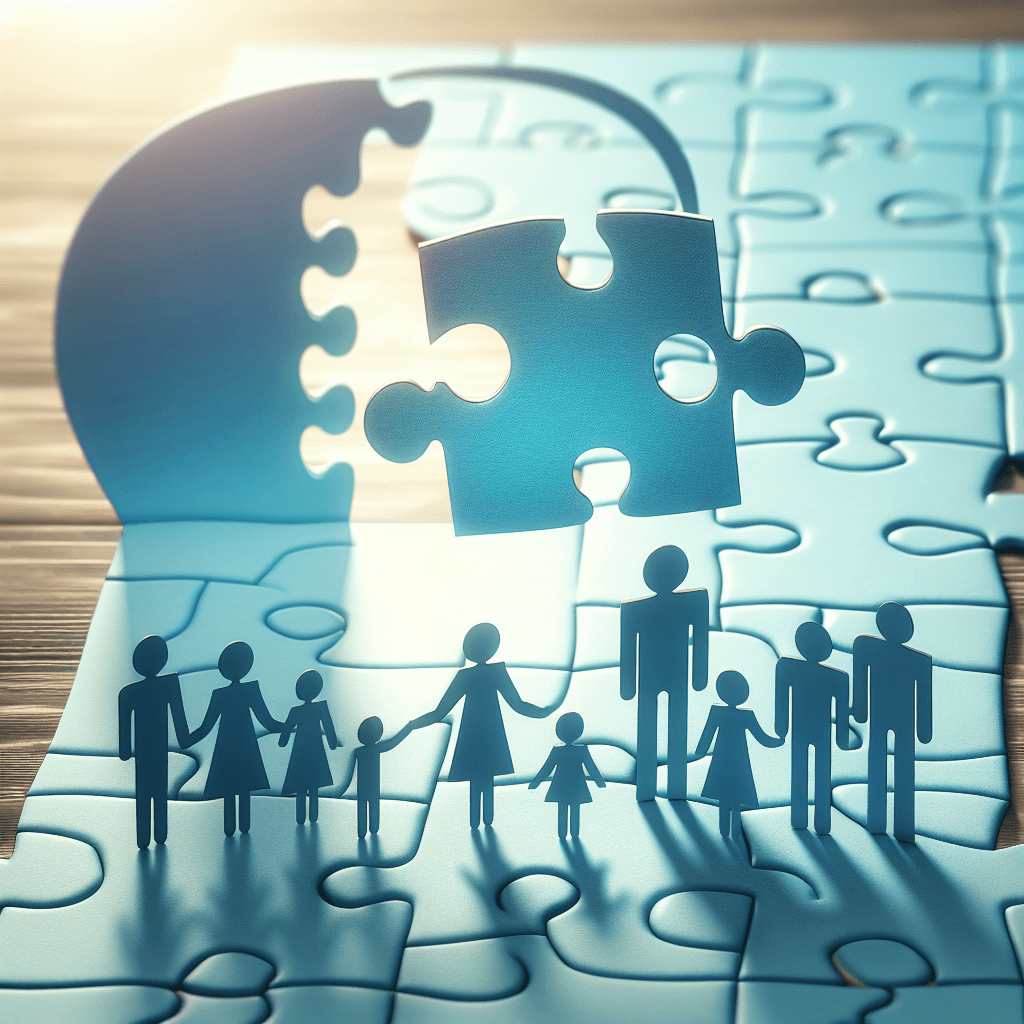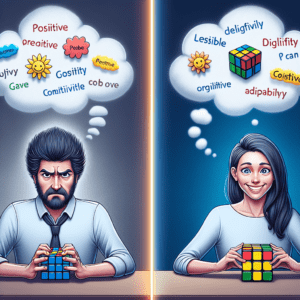Get your free Book Here

Healing Together: Why Family Therapy is Essential for Mental Illness Recovery
Chapter 1: The Importance of Family Support in Mental Health
The journey of mental illness recovery is often labyrinthine and fraught with challenges. No one should have to navigate this journey alone. Family members, inherently integral to our lives, can play an essential role in supporting the person affected by mental illness. Family members provide emotional grounding, tangible assistance, and a sense of stability. They can be a refuge where understanding, compassion, and love reside. In therapy, it’s imperative to acknowledge not only the individual’s needs but also those of their family members.
As a care worker, I have seen firsthand the weight of despair that often accompanies mental illness—an experience that can leave families grappling with confusion, fear, and helplessness. However, when families engage in therapy together, something remarkable happens. They are afforded the opportunity to heal collectively, learning to communicate better, understand each other’s perspectives, and rebuild the emotional ties that may have frayed during challenging times. Family therapy can shift the dynamic from isolation to collective resilience.
Chapter 2: What is Family Therapy?
Family therapy, also known as couple and family therapy, is a branch of psychotherapy that addresses the dynamics and relationships within a family unit. This approach helps families to understand the psychological issues affecting one or more family members by examining their interactions. Unlike traditional therapy, which usually focuses solely on the individual, family therapy brings everyone together to unpack their experiences and emotional responses.
In family therapy, each member is given a voice. This inclusivity enables everyone to express their feelings without fear of judgment. The therapist acts as a mediator and guide, facilitating discussions that can reveal underlying issues. At its core, family therapy emphasizes the interconnectedness of family life and the importance of communication. It invites every member to be part of the healing process, reaffirming that mental illness is not just the individual’s battle—it is a family affair.
Chapter 3: Breaking Down Patterns of Communication
Effective communication is the backbone of healthy relationships. In families dealing with mental illness, communication styles can often become dysfunctional or strained. Family therapy works as a platform to break down these patterns, fostering effective communication. Sessions enable families to practice expressing feelings openly and honestly, without the fear of criticism.
During family therapy, family members learn vital skills such as active listening and empathy. They learn to value each other’s perspectives and to validate one another’s feelings—even when they may not fully understand them. By creating a safe space for expression, family therapy allows participants to voice their fears and frustrations, fostering an environment of trust. When family members communicate effectively, it not only eases tension but encourages connection and mutual support.
Chapter 4: Understanding Roles within the Family Dynamic
Every family operates as a complex system, with each member playing a specific role that contributes to the family dynamic. Sometimes these roles can be counterproductive, especially in families affected by mental illness. For instance, one member might assume the caretaker role, while another fosters conflict or denial of the illness. Family therapy provides space to identify these roles and their impacts.
Through exploration, families can uncover patterns that have developed over years—recurrent behaviors and reactions that may hinder recovery. By fostering awareness of these dynamics, family therapy facilitates change. Families can reassign roles that promote healing rather than those that perpetuate distress. Ultimately, this understanding leads to healthier, more adaptive functioning, enabling the entire family to work towards recovery together.
Chapter 5: Addressing Stigmas and Misconceptions
Stigma surrounding mental illness is a significant barrier to seeking help. This stigma can often extend to family members, who may also experience discrimination or misunderstanding from their communities. Family therapy serves as an opportunity to address these stigmas directly. Families can learn together about the realities of mental illness and debunk harmful myths that may have eroded their understanding and patience.
Family therapy creates a shared, informed narrative around mental health. By confronting stigmas head-on, family members can advocate for one another effectively, both within the family unit and outside it. A united family front is more resilient to the prejudices society can impose. Together, families can break the chains of stigma and foster a culture of understanding and acceptance, freeing all members to seek the help they need.
Chapter 6: Building Coping Strategies Together
Mental illness does not exist in a vacuum; it impacts everyone involved. As such, coping strategies must be cultivated both for the individual and the family. Family therapy enables families to discuss and develop healthy coping techniques in a supportive environment. Themes of resilience, adaptability, and emotional regulation can be explored, allowing families to integrate these strategies into their daily lives.
During therapy sessions, families can engage in activities where they learn how to manage crises, support one another, and take collective action during difficult periods. This shared knowledge provides the framework for healthier functioning outside of therapy. Ultimately, these strategies bolster each family member’s capacity to support one another, reinforcing the idea that they are not alone in this journey.
Chapter 7: Strengthening Relationships and Reducing Isolation
Mental illness can often lead to feelings of isolation for both the individual and their family members. Family therapy combats this feeling of separation by allowing family members to understand one another’s experiences and emotions better. Sharing personal feelings in a therapeutic environment can break down barriers and promote emotional bonding.
As relationships within the family strengthen through therapy, the individual dealing with mental illness is likely to feel more valued and supported. Improved relationships foster greater self-esteem and hope, crucial components of recovery. It can lead to creating new memories and experiences that distract from the stifling effects of mental illness, replacing isolation with connectedness.
Chapter 8: The Ripple Effect of Healing
The roots of healing in family therapy extend far beyond the confines of a therapy room. When a family rehabilitates their dynamics, supports one another, and builds healthy communication patterns, the effects radiate into their broader communities. Families can emerge strengthened, embodying resilience that contributes to improved mental health literacy.
The healing process primes family members to approach their relationships with others outside the family unit differently. As they confront their struggles, family members can become advocates for others facing similar issues. They can share their journey, helping to dismantle stigma and educate communities about mental illness. Indeed, the ripple effect of healing in family therapy underscores the cohesive nature of mental health—it flourishes in community support and understanding.
Conclusion
In a world where the conversation around mental health is steadily evolving, family therapy remains an invaluable resource in the recovery journey. By navigating the complexities of communication, understanding roles, addressing stigma, and fostering coping strategies, families can heal together. The collective effort nurtures a support system that enables individuals to confront their mental health challenges with confidence and resilience.
Family therapy isn’t merely about treating the individual; it’s about promoting overall family wellness in an interconnected manner. When families work together, everyone benefits, and healing can transform from an isolated journey into a communal endeavor. Ultimately, the commitment to supporting one another fosters deep bonds that can last a lifetime, creating an enduring legacy of understanding and compassion.
FAQs
-
What are the main goals of family therapy?
- The goals of family therapy include improving communication, resolving conflicts, strengthening relationships, promoting understanding of mental illness, and developing effective coping strategies.
-
Who should participate in family therapy?
- Ideally, all family members who are impacted by the mental illness should participate. This can include immediate family as well as extended family members.
-
How long does family therapy usually last?
- Family therapy can vary in length, typically lasting anywhere from a few sessions to several months, depending on the specific needs of the family.
-
Is family therapy effective for all types of mental illness?
- While it is not a one-size-fits-all solution, family therapy has proven effective for a variety of mental health conditions, including depression, anxiety, and eating disorders.
-
What can I expect during a family therapy session?
- During sessions, families can expect guided discussions facilitated by a therapist, activities aimed at improving understanding among members, and strategies to enhance communication.
-
Can family therapy be done remotely?
- Yes, many therapists offer remote family therapy sessions via video conferencing, making it accessible for families regardless of location.
-
How do I find a family therapist?
- You can find a family therapist through referrals from healthcare providers, mental health organizations, or online directories that specialize in therapy services.
-
Is confidentiality maintained during family therapy?
- Family therapists are required to maintain confidentiality; however, it’s essential to discuss confidentiality expectations at the beginning of sessions.
Disclaimer: I may earn a commission from qualifying purchases as an affiliate. Please note that I only recommend products I believe will provide value to my readers. (M)







